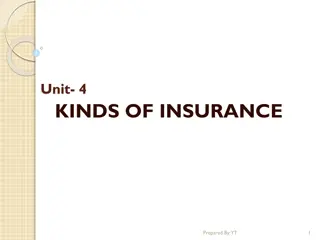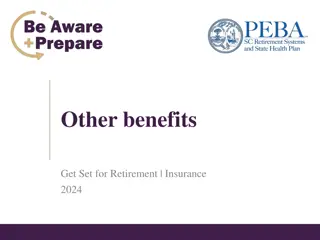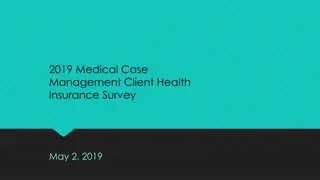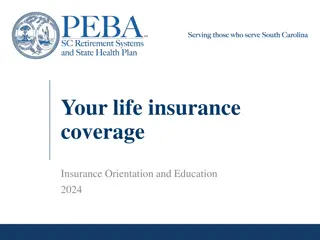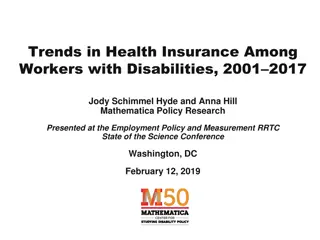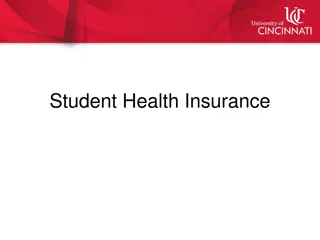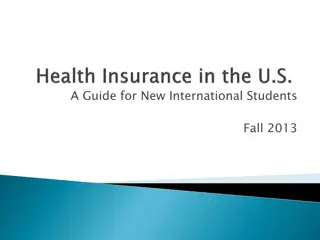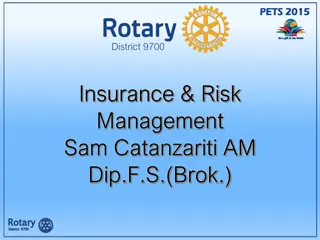Understanding the Complexities of Insurance and Health Coverage Strategies
Delve into the intricate world of insurance by exploring the basics of the industry, the benefits of belonging to a cooperative, and the rationale behind utilizing Health Reimbursement Arrangements (HRA) to save costs. Learn how Western Area Schools effectively manage their insurance plans to provide coverage for their large group while optimizing financial resources through strategic planning.
Download Presentation

Please find below an Image/Link to download the presentation.
The content on the website is provided AS IS for your information and personal use only. It may not be sold, licensed, or shared on other websites without obtaining consent from the author. Download presentation by click this link. If you encounter any issues during the download, it is possible that the publisher has removed the file from their server.
E N D
Presentation Transcript
INSURANCE DISCUSSION DEDUCTIBLE HRA Western Area Schools WAS
(I know not everyone takes insurance, but I believe most of society is insurance ignorant) The basics of the Insurance Industry: It is complicated and confusing Billing is all about coding Usually contracted out to 3rd parties Bills are process in the order received Basic coverage is universal (Obama Care) If your coverage is better then it costs more
Why belong to a coop? We have 26 members with over 2,000 insured people. The risk is spread out among all schools Better buying power in the marketplace (bigger fish) We are not for profit and we have a seat at the table with the ability to change coverage and fix inequities. If we went on our own and purchased insurance from Health alliance or Blue Cross Blue shield?
Our Western Area School COOP Our coop is made up of 26 districts and ROE s We cover a large geographical area This limits our network savings options We could have greater savings if our coop agreed to force our members to specific providers/networks. Healthlink is our preferred provider network. (one of the largest)
Lets get specific Our HRA deductible is 1,000 and our WAS Coop deductible is 5,000. The average medical plan deductible in the US is $1,655 (Kaiser Family Foundation) A deductible is the amount that the individual has to spend before Insurance starts paying anything. Only 25% of those covered in the WAS coop meet their deductible annually. The items in our plan that require a co-pay do not apply to the deductible. ( basic doctor office visit has $35 co-pay and a specialist visit has $50 co-pay and ER has $150 co-pay)
Why do we mess with an HRA? WAS has two main plans: Red Plan - which has 1,000 deductible & White Plan which has a 5,000 deductible. The premium paid to WAS for the Red Plan is $829mo or $9,949.80 annually. The premium paid to WAS for the White Plan is $592mo or $7,105.80 annually. So, if we have 100 employees taking insurance, the RED plan would cost $994,980 and the WHITE plan premiums would cost $710,580. That is a difference of $284,400. We formed an HRA betting that for a little more confusion we could save the district a lot of money. We are betting that since less than 25% of people meet their deductible, if we become the insurance company for charges between 1K and 5K we will be ahead or saving money that would have otherwise gone to the coop. Last year we paid $142,818.76 out of our HRA meaning we saved $141,582 by having and HRA.
You need to realize you have 2 plans. $8000 $7000 80% - $6000 50% - $5000 $4000 $3500 MAX Out of Pock 80% - $3000 20% or 50% 50%- $2000 20% or 50% $1000 deductible Med exp Your Cost Havana HRA WAS COOP
Lets look at an EOB explain in network and out of network providers and the difference. In network providers generally bill at 80/20 Out of network doctors are billed at 50/50 The plan does this to steer insured to in network doctors because there are better discounts for the plan that save us all $$$.
Show EOB examples, spreadsheet and Consociate website






